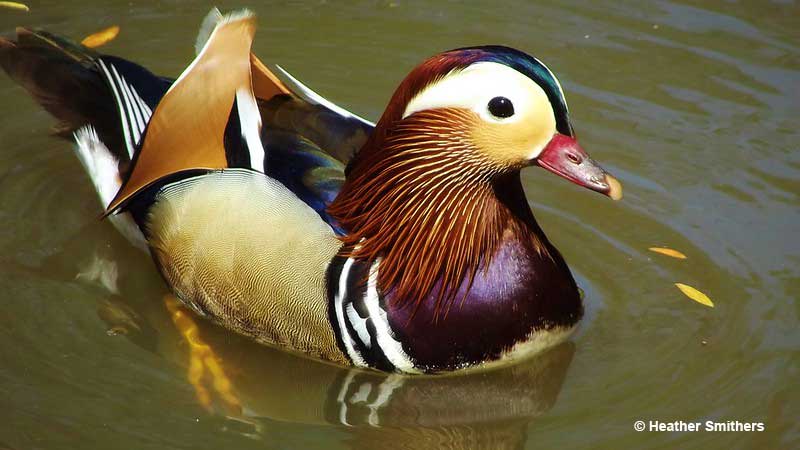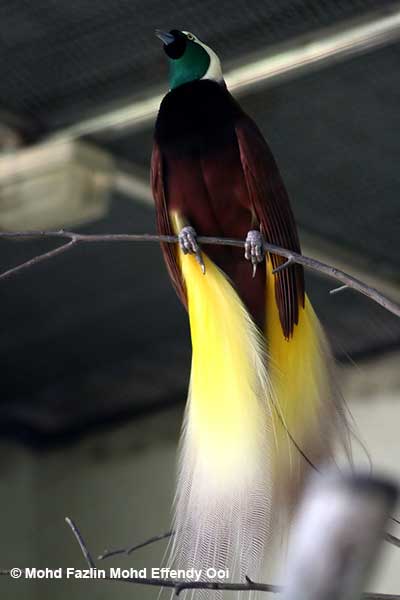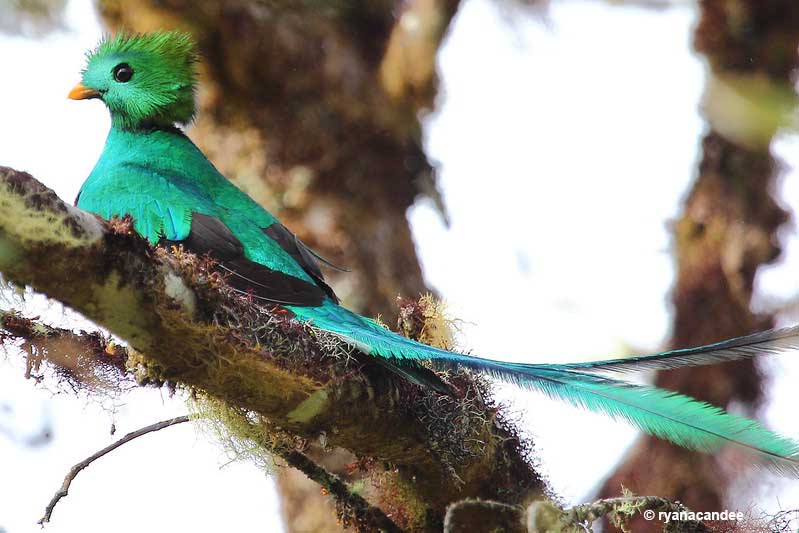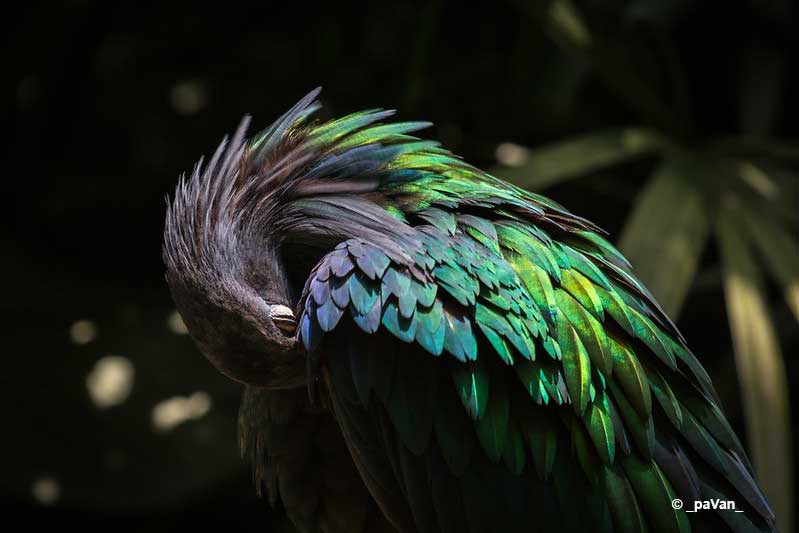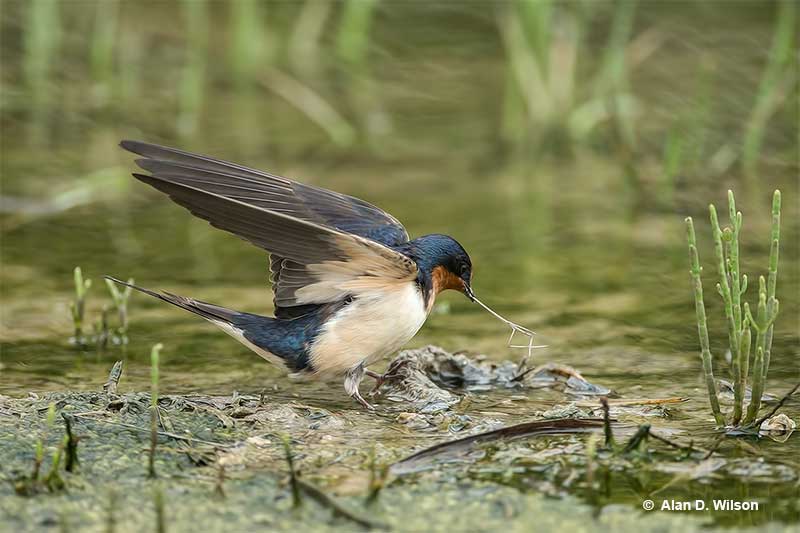
Beauty is in the eye of the beholder, there’s no denying that. This is why we chose some of the most beautiful birds that can hold the tile in our eyes.
On this page
Around The World
12. Indian Peafowl
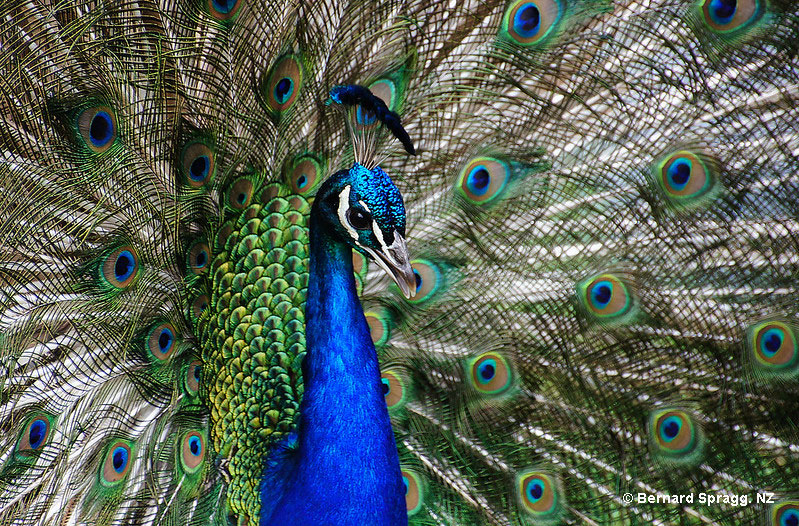
Peacocks, or Indian Peafowls are iconic and spectacular birds native to grasslands and woodland habitats in and near India. Indian Peafowls are also commonly seen and heard on farms and big gardens in various other parts of the world.
Related: What do peacocks symbolize?
This fancy bird is a huge member of the pheasant family, and occurs in small flocks. These big birds pick at bits of grain and snatch small reptiles, insects, and other food items from the ground. Only males have the birds’ unique and incredible long tail feathers, females are more laid-back. They spread and shake it to impress mates, in territorial situations, and to pose for the camera!
11. Mandarin Duck
Mandarin Ducks are exquisite little waterfowl native to northeastern Asia. They breed in forested wetlands in Japan, northeastern China, and adjacent parts of Russia and North Korea. In winter, they also occur on lakes and other wetlands in eastern China and Japan.
Thanks to the male Mandarin Duck’s incredibly ornate plumage, this bird is also popular on farms and in waterfowl collections in North America and Europe. Like many other small ducks, it forages for seeds, grain, aquatic plants, and other bits of food while floating or on land near water.
Once in a while, one escapes from captivity in North America and is enjoyed by local birders!
10. Greater Bird-of-Paradise
The birds-of-paradise family has some of the showiest birds on the planet. The Greater Bird-of-Paradise is no exception; it has an abundance of fluffy white and pale yellow plumes on its back!
To see such an exotic bird in the wild, you do need to travel quite a ways. Greater Birds-of-Paradise only occur in the canopy of mature lowland and foothill rainforest in Papua New Guinea.
Related: The opposites – ugly (or unfortunate-looking) species
Not much is known about this fancy bird, but it probably feeds on fruit and arthropods. Males make loud calls as they fluff their plumes for the females. During their display, this beautiful bird leans over while fluttering its wings!
9. Resplendent Quetzal
Some birds look so incredible, that people have given them sacred status. The Resplendent Quetzal is one such bird. This big, iridescent trogon has long held a special place in Mayan cultures and has even been viewed as a divine messenger.
Resplendent Quetzals only live in mature cloud forests of Central America and adjacent southern Mexico. They feed on small wild avocadoes, other fruits, and occasional bugs and small lizards.
While foraging, the plumage of the Resplendent Quetzal can shimmer between emerald green, coppery-gold, and shades of jade-blue as it hovers in place! In flight, they look just as spectacular as their long tail undulates behind them.
8. Nicobar Pigeon
Nicobar Pigeons are unique pigeons that only live on islands from Myanmar and the Philippines south to Indonesia and the Solomons. Few if any other birds have anything like the Nicobar Pigeon’s dark plumage with iridescent highlights, neck hackles, and white tail!
This species is usually seen in small flocks on small islands with mangroves and other scrubby habitats. They are nomadic and fly between islands to forage on the ground for seeds passed by Imperial Pigeon species, nuts, and other bits of food.
Nicobar Pigeons nest on small, remote islands with other pigeons in colonies that can number in the hundreds or even thousands of birds!
7. Marvelous Spatuletail
The Marvelous Spatuletail just might be the hummingbird with the most incredible appearance. Although many members of this impressive bird family have beautiful shining colors and long tails, none are as fancy as this species.
Marvelous Spatuletails live in a small area in the Andes of northern Peru, and only occur in scrub and second-growth habitats. They prefer spots with plenty of small flowers to feed on and also visit hummingbird feeders in one or two spots.
During its impressive courtship display, the male hovers in front of the female while moving its ornamental tail around!
North America
6. Great Blue Heron
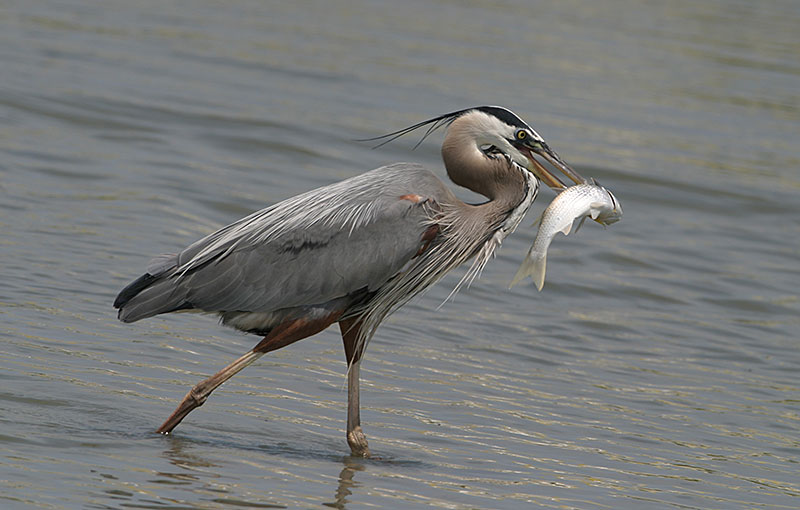
The Great Blue Heron is a beautiful and majestic bird, native to North America. Similarly to other herons, these birds can be spotted near bodies of water, which are their sources of food. If you know where to go, it’s easy to see them standing still and looking down at the water – this is their hunting style, with sharp precision they’ll swoop down at their prey.
With their grayish plumage, and some longer wispy feathers, these birds are truly a sight to see!
5. Steller’s Jay
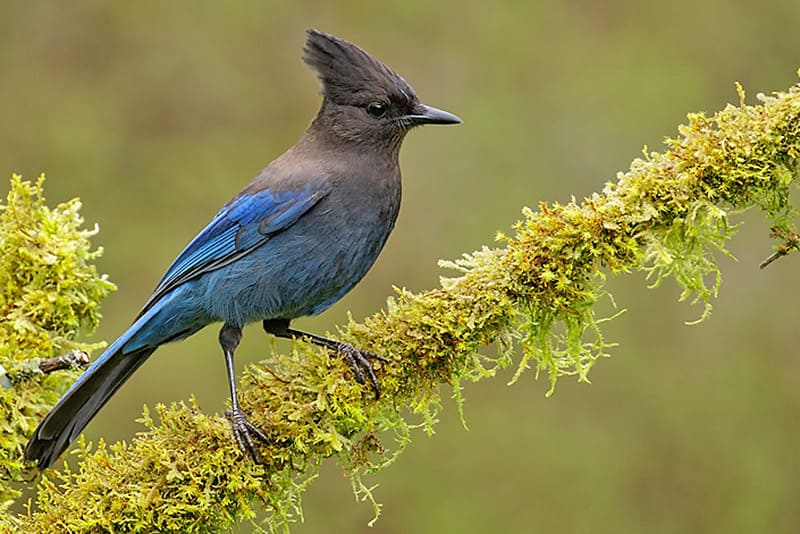
Photograph © Glenn Bartley.
Steller’s Jay is a beautiful black and blue bird, found over the western parts of North America.
Just by looking at them, it’s easy to see the tell-tale jay traits, but along with Blue Jays, they are the only two North-American jays that have crests.
Just as other birds, Steller’s Jays have their preferred habitats – they can be found in coniferous-deciduous and coniferous forests and lower levels of the Pacific coastal foothills in evergreen forests and at elevations of 3,000 to 10,000 feet in the wilderness.
4. Hooded Merganser
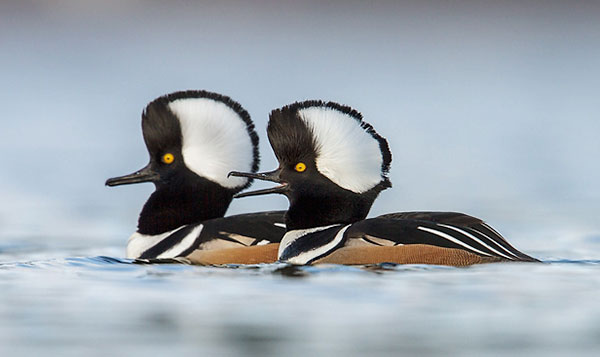
Hooded Merganser: Photograph © Glenn Bartley
The Hooded Merganser’s distribution is more limited than that of other mergansers, and its body size is smaller as well. Hooded Mergansers are cavity nesters, and will use nest boxes quite readily. In some areas they commonly use Wood Duck nest boxes.
They are easily identified by their elaborate black and white crests. However, female Hooded Mergansers look completely different – they are brown and have more laid-back plumage in general.
The eggs of Hooded Mergansers are unusually thick-shelled, and unusually round in shape, though it is not known why these traits occur. Young birds have longer claws than most other ducks to help them climb out of the nest cavity.
3. Painted Bunting
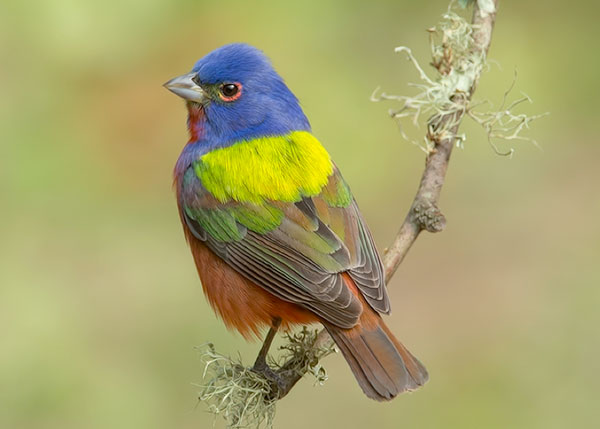
Painted Bunting: Photograph © Alan Wilson
With one of the most colorful and distinctive plumages of any North American bird, the Painted Bunting is popular with birders, but many aspects of its biology need more study.
On the contrary to the multicolored males, females have simple greenish plumage, which helps them stay hidden during breeding.
There are two populations of Painted Buntings with differing migration and molt patterns. One population occurs on the southeastern Atlantic Coast, and the other in the southern Great Plains east to Mississippi.
2. Scissor-tailed Flycatcher
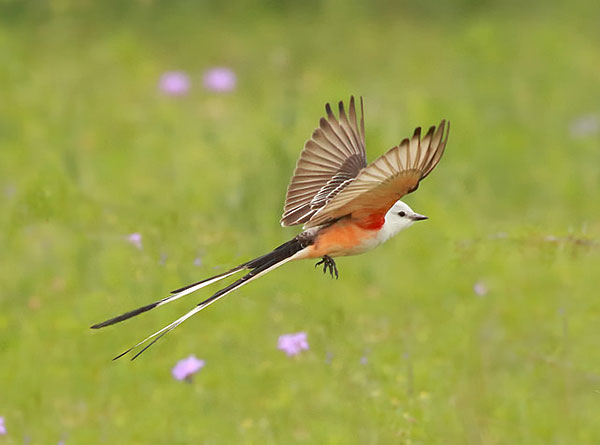
The Scissor-tailed Flycatcher is a beautiful orange and white bird with a distinctive long and forked tailed.
Their long tails have a purpose too – Scissor-tailed Flycatchers use their tails to make sharp turns and other quick maneuvers when catching insects in flight and during their impressive aerial display.
Scissor-tailed Flycatchers have a limited range in the U.S. During the breeding season, they are seen in some south-eastern states, but when you see one, it really is worth seeing!
1. Wood Duck
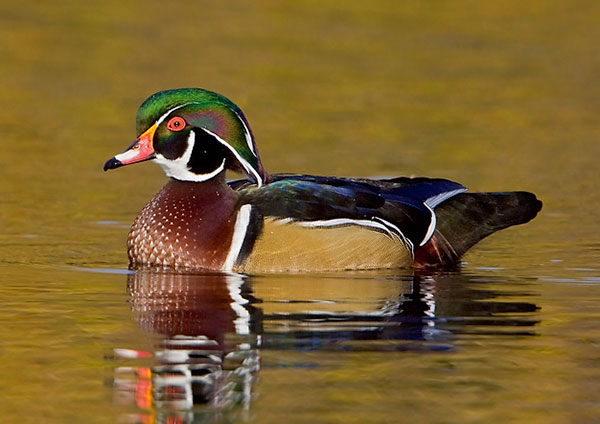
Wood Duck: Photograph © Glenn Bartley
A resident across much of its broad North American range but migratory in some northern areas, the Wood Duck is often described as one of the most beautiful ducks. Such descriptions refer to the male, for the female Wood Duck is more cryptically plumaged in subtle brown and grays to provide her with camouflage.
Males have beautiful vibrant plumage, especially on their heads – their beautiful ‘helmet’ is one of their amazing identifying-traits-.
Dependant on natural cavities or occasionally old Woodpecker holes of sufficient size for nesting, the Wood Duck requires mature forests. Artificial nest boxes are readily accepted as well, and can help boost local Wood Duck populations.
Do you agree with us? Which birds do you think are the most beautiful birds?


